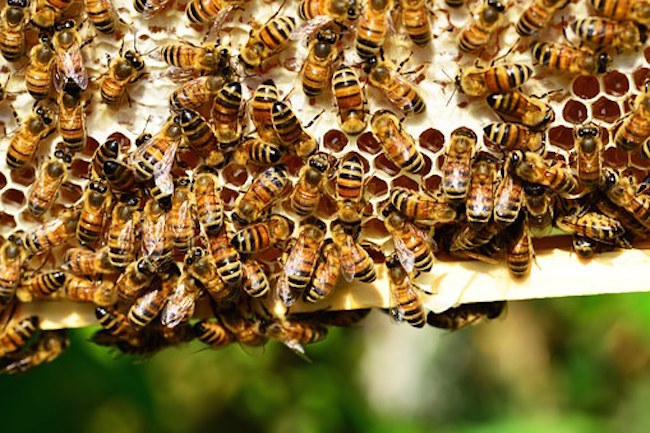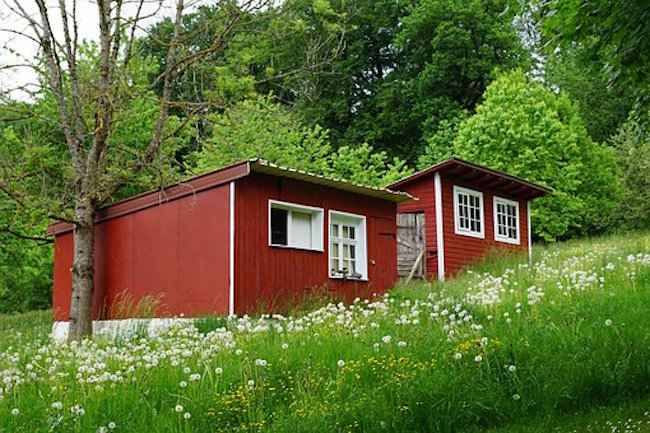Adventures in Beekeeping by K. in Tennessee for Survival Blog
I’ve been a regular reader of SurvivalBlog.com for years and had developed an interest in keeping bees. I started researching online, got a book or two from the library, and after a few years felt I was ready to give it a try. Then we moved 800 miles away, bought some land, built a house, and started a little hobby farm in southern Appalachia. Life has funny ways of getting in the way, but I’m much happier for it, and now I have a great place to try out the hobby of beekeeping.
I was quite daunted with all of the information I found, but after reading a few different books, and lots of time spent online reading even more, and talking with fellow “beeks” (beekeepers), I got a general picture of how things were supposed to work. This took several years, I found it quite my head around the bigger picture challenging. As a new-to-me hobby I only dedicated a minimum of free time to learning about it. Once you decide to jump-in, make sure you are prepared to offer more than just the minimum: I’ve had a couple adventures. I found going to local beekeeper clubs and group meetings in the area to be very useful. Knowledge, information, good deals, and general well wishes were in abundance every time I took the time to attend. Eventually I got my hive and some minimal protective gear. I ordered a package of bees for the spring through a local club, and began the adventure I am about to describe. So far it has been rewarding, I am looking forward to continuing the journey.
STARTING OUT
So you want to keep wild animals in a box? Several reputable vendors have hive-starter kits available for sale. Your local club may have a member who makes them cheaper, but basically we’re talking about the wooden box you keep the bees in. They come in different shapes and sizes, the most common are the Langstroth style. It’s good to standardize if you have a lot of hives, but for starters, go with what suits you. 10-frame setups are larger and heavier than 8-frame setups. The bees don’t care, but your back might! I recommend 2 deeps for your ‘hive body’ (bottom half), and 2 mediums for your ‘supers’. The wooden boxes can be used inter-changeably: the “Hive Body” is where the bees live, the “Super” is where they store the honey. Purchase frames to match (20 deep and 20 medium if you want a 10-frame setup, 16/16 if an 8-frame).
You’ll need a hammer (kits come with nails!), some wood glue, and white outdoor paint (the cheap barn-paint from the co-op works just fine!). A carpenter’s framing square will come in handy if you have one, tape measure will work in a pinch if you don’t. Building hive-boxes is simple and easy, follow the directions provided, take your time, and make sure they are square. Paint the exterior of the entire hive with the barn-paint, if you have an artist in the family, let them go to town! Give the paint plenty of time to cure and start scouting for where you want your apiary to go.
Hives like a little sun when it is cold, but not when it is warm. Find a sheltered area and face the hive South-East, protect from strong winds, and elevate slightly (pair of cinder-blocks, maybe 18” high — let your back decide!) You can find a wealth of information about how best to setup and install new hives online or in books. Don’t forget to ask around at your local club meeting – they usually have a meeting every spring where they talk about it! You may even be able to find a person willing to mentor you and come to your location to help you plan.
You’re going to need personal protective gear, unless you don’t mind bee stings. At a minimum you should get a veil and gloves. I started with just those 2 things, wore old jeans and a heavy coat, tucked my pant legs into my socks…. It was quite a sight. Eventually I got a jacket-helmet combo (same old pair of jeans, I still tuck my pants..), I highly recommend not being as cheap as I started out as. You can get a decent full suit for 50-bucks online. Worth. Every. Penny. Poor protective gear will make hive inspections much harder on you, and therefore less likely to happen, which is undesirable.
With all new equipment, you’re talking about $300-400 in today’s market. Not a bad price to start a new hobby, but still not exactly pocket-change.




